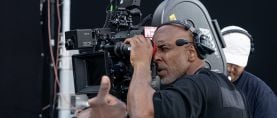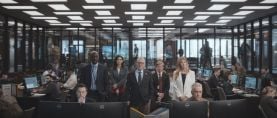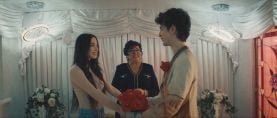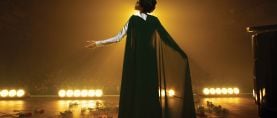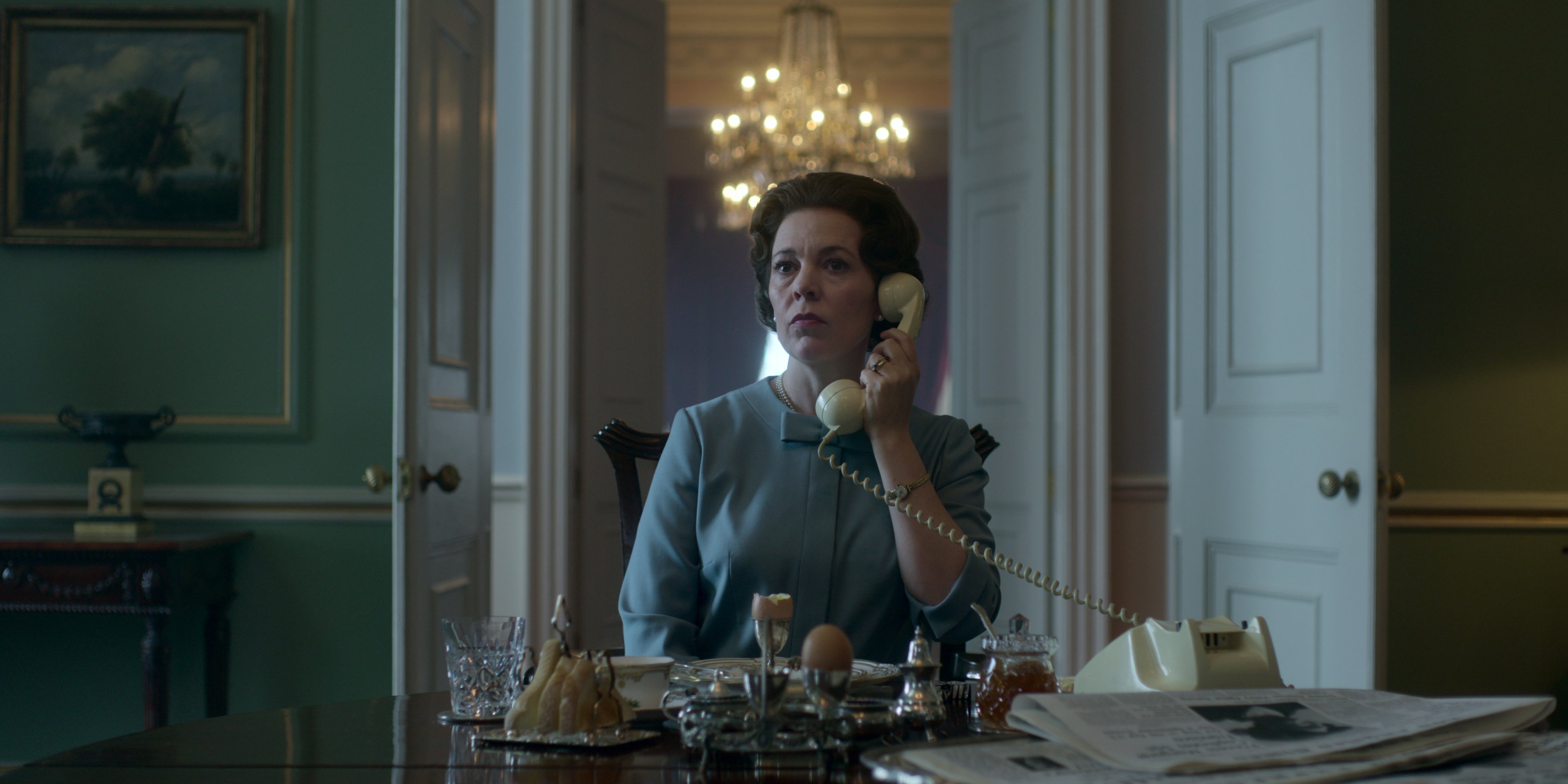
Regal Drama: The Crown
Adriano Goldman, ASC, ABC, BSC discusses his Emmy-winning work behind the camera on the period Netflix drama.
Interview by Richard P. Crudo, ASC
Photos courtesy of Netflix
Entering its fourth season, the critically acclaimed Netflix series The Crown follows the life and political rivalries of England’s Queen Elizabeth II, and the events around her that helped shape the second half of the 20th century. By the end of the series, Elizabeth will have been played in succession by actors Claire Foy, Olivia Colman and Imelda Staunton (the latter of whom will assume the role in the show’s fifth and final season).
Adriano Goldman, ASC, ABC, BSC — knighted to shoot The Crown by executive producer/director Stephen Daldry — served as cinematographer on the show’s 2016 pilot episode, and has shot 22 episodes in total thus far. A two-time Emmy Award nominee for his work on the series, Goldman won for the Season 2 episode “Beryl,” which also earned him his second ASC Award for the show; he had previously won for the Season 1 episode “Smoke and Mirrors.” “Beryl” also brought in a 2018 BAFTA Television Award for Goldman, who has shared cinematography duties on The Crown with Stuart Howell; Ole Bratt Birkeland; Frank Lamm; Fabian Wagner, ASC, BSC; and Ben Wilson.
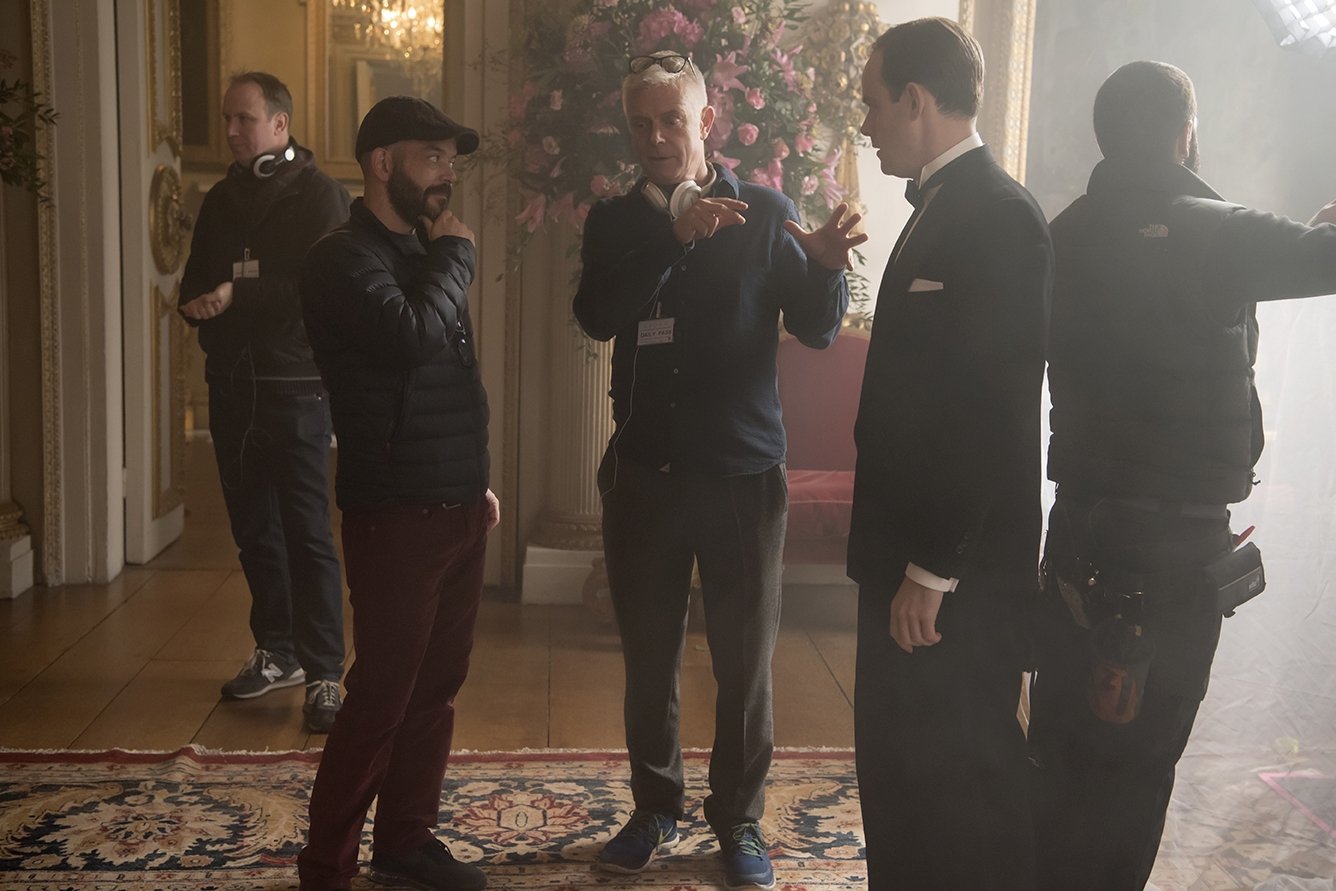
Born in São Paulo, Brazil, Goldman is also known for his work on such features as Romance, Conviction, The Company You Keep, August: Osage County and Burnt. He collaborated with director Cary Joji Fukunaga on the feature Sin Nombre (AC April ’09), which earned a cinematography award at the 2009 Sundance Film Festival and an Independent Spirit Award nomination, and the pair reteamed for the feature Jane Eyre (AC April ’11).
ASC member Richard Crudo interviewed Goldman for this Q&A. The two cinematographers discuss Goldman’s tenure on The Crown, the realities of television production, the struggle to stay consistent and the need for creative cohesion between departments.
Richard Crudo, ASC: People have been telling me for the longest time, “You have to watch The Crown.” Over the holidays, I watched one episode and thought, “Oh, my God, they were right!”
Adriano Goldman, ASC, ABC, BSC: So you started from Season 1?
Crudo: From Season 1. I watched all the way through. I normally don’t have much interest in the royal family, but the story sucked me in. It’s just so fabulously well done.
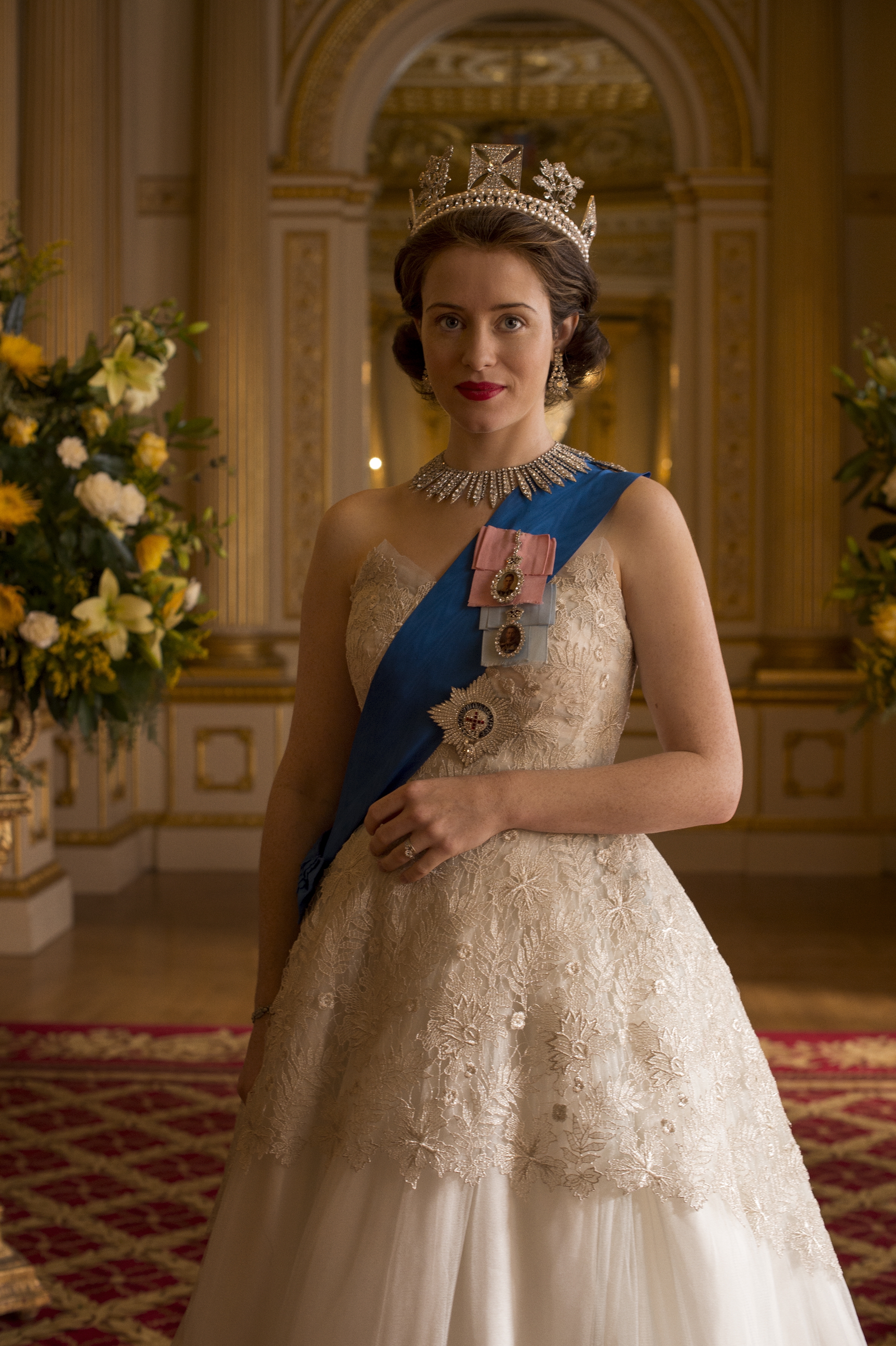
Goldman: I really appreciate your kind words. You can probably understand, more than any journalist, my perspective when I go back to [look at] Season 1. I struggle. I think, ‘Oh, I should have done this or that differently.’ But there are at least three episodes per season I really like — that I’m really proud of. I think the show’s quality is very consistent, even though we have more than one cinematographer per season. We’re not telling a 10-hour story. All the episodes tell kind of different stories.
Crudo: Yes. The episodes stand on their own.
Goldman: The other cinematographers — and this is something we discussed at the beginning of every season — were welcome to come on set [and observe what we were doing]. But they also have the freedom to do things differently. Because in every episode there are only a few very light, subtle rules that we discuss in terms of, for example, how to frame close-ups or shoot close-ups — such as, ‘Please don’t do close-ups on a 25mm lens.’ All of the close-ups should be done with 50mm and 65mm lenses. We don’t appreciate shooting people from awkward angles, like too low or too high. To maintain some sort of visual consistency, there are a couple of rules to follow. But I never found the other cinematographers to be too frustrated about having to follow some guidance.
Crudo: Everyone has adapted your methods and kept a look and a consistency that’s just brilliant.
Goldman: I agree. And there is an overall mood, an overall kindness that is absolutely clear. The production designer, Martin Childs, is the kindest man you could ever find, and his department is a joy to work with. I’m not trying to idealize things too much — because, of course, we struggle now and then — but that collaboration is special. I think for Daldry and myself, the energy that comes from the individuals is what we want — we want to be able to come to work, learn, have fun, and be kind to one another. [And that approach] works; it really does. I mean, we hardly ever have long shoots or night shoots, so the show is well organized. We have the best 1st ADs in the U.K.
Crudo: On The Crown, you’ve got the grandest locations. When we see places like that, there’s sometimes the temptation to do more with them, but you never step over that line. How do you manage the balance?
Goldman: I don’t think all of those decisions are 100 percent conscious. I remember the first meetings we had, very early on, around a table. From the very beginning, my position was that I hoped we could do the show in a realistic mode. I felt that we should be able to almost hear the characters breathing, so I wanted to be close to the actors — I’m talking about the physical distance between the camera and the actors. We could have opted to shoot scenes with long lenses, in a more documentary style, to deliver a modern look for a period drama. That’s a reasonable conversation, but we never wanted that. We didn’t want to make the show too Cinderella-like — too ideal. I need to believe that the fabrics are real, and that the furniture has been used. I mean, these people have used this same furniture for more than 100 years! Why are we going to bring in brand-new stuff? All of these discussions were collective, and I was involved in every one of them. I thought the whole first season should look desaturated, and I explained that I didn’t want to do it all in post, so I asked everyone to be on the same page. Martin Childs — and everyone else — heard this and responded, “Ah, I see.” But I also need to be absolutely fair and say that a good look — good cinematography — doesn’t save a bad show. We’re here having this conversation mainly because of [screenwriter] Peter Morgan and Claire Foy. I think the incredible new thing people felt they were experiencing when they saw The Crown is basically due to how sophisticated Peter’s dialogue is, and the incredible performance Claire gives — especially in Season 1.
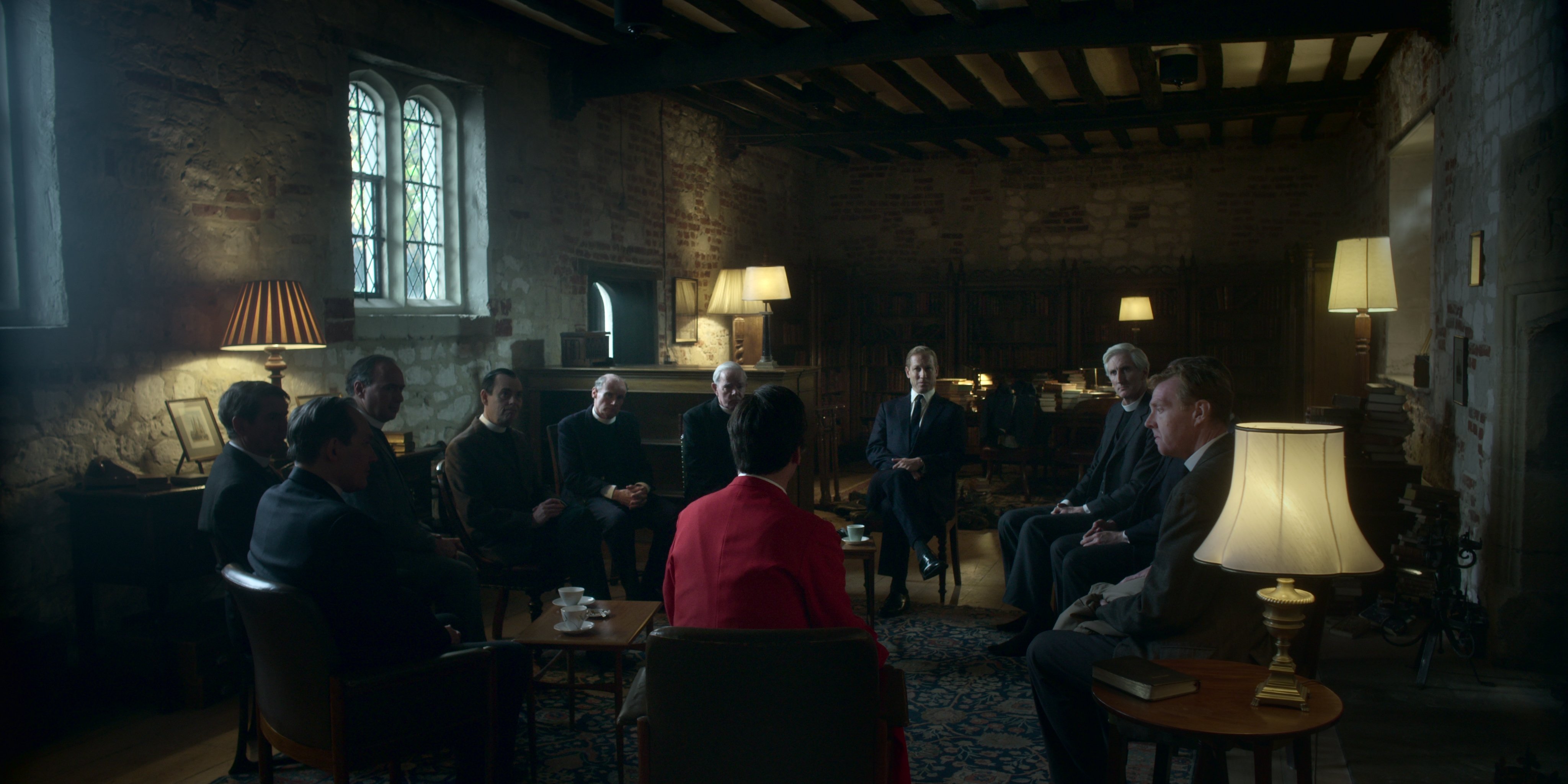
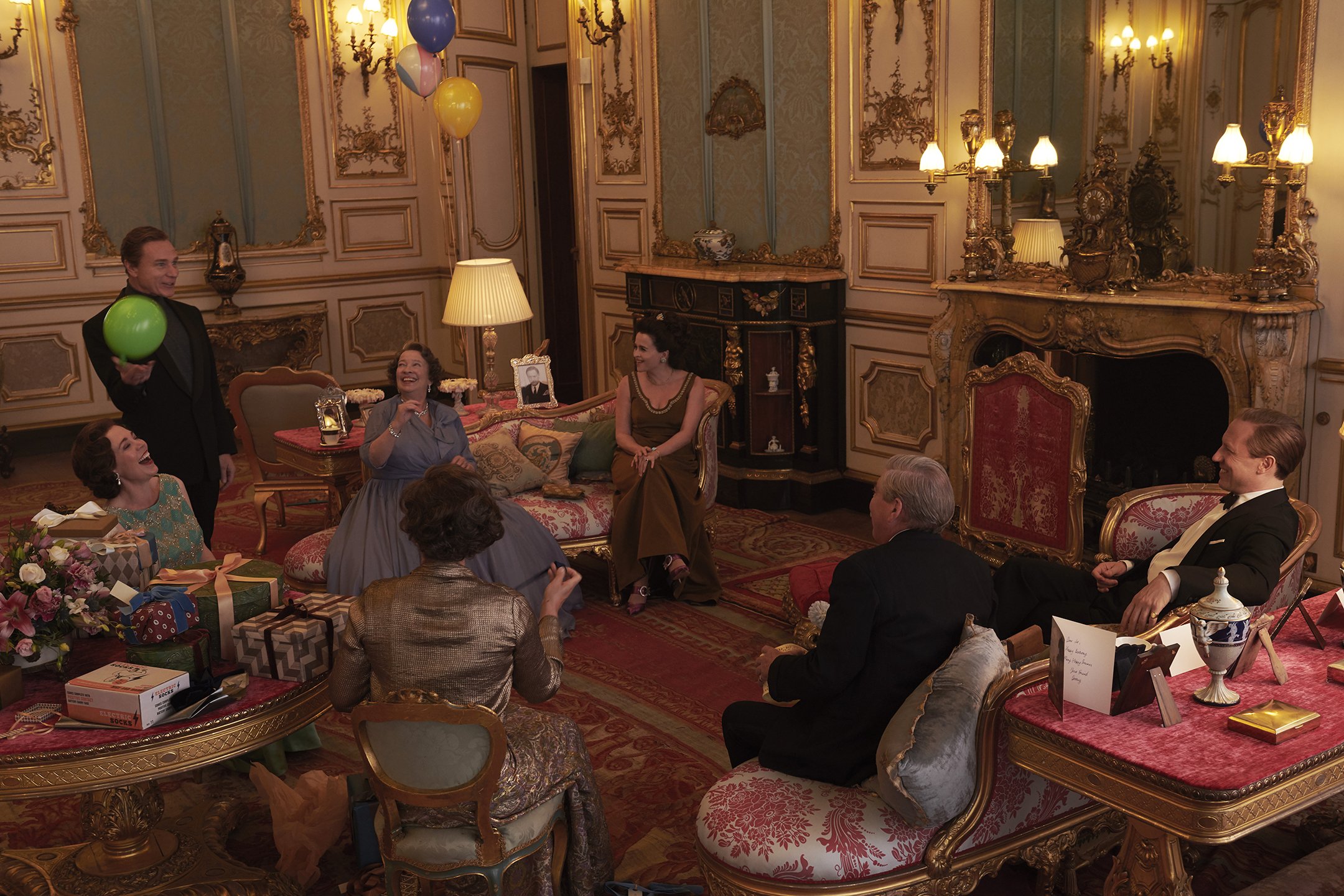
Crudo: Each episode feels like a movie that stands on its own.
Goldman: There was a clear change in Season 3, because we had a new cast — including Olivia Colman. She is [so good] — she is not of this world, honestly. [She makes my job] easy, because she’s always ready and always professional. But before we actually began shooting Season 3, I [wondered] — how is this going to look? Do I still feel motivated to deliver something new and fresh? I think in the end, we all managed to do that. For instance, I think Episode 3 from Season 4 — it’s not finished yet, but I’ve seen a cut — is very likely the best thing I’ve ever done. And this is the fourth season, when you can start to think, ‘Oh my God, am I getting tired of this?’ But then you know you’re not, because the other good thing about The Crown is that now — in Seasons 3 and 4, for instance — we can finally embrace modern architecture, furniture and design. Our two worlds are now very separate — we have the royal-family side of the story, and then the political side. [And we also] have the U.K. in the 1960s and ’70s, and that culture — you know, the Beatles, et cetera. And in Season 4, we introduce Margaret Thatcher and young Diana. So now we have two amazing characters [who add] to all of those layers.
“I don’t think good cinematography can save a bad script. I think people only perceive what I do if they engage with the show’s themes and performances — if they engage with the story that’s been told.”
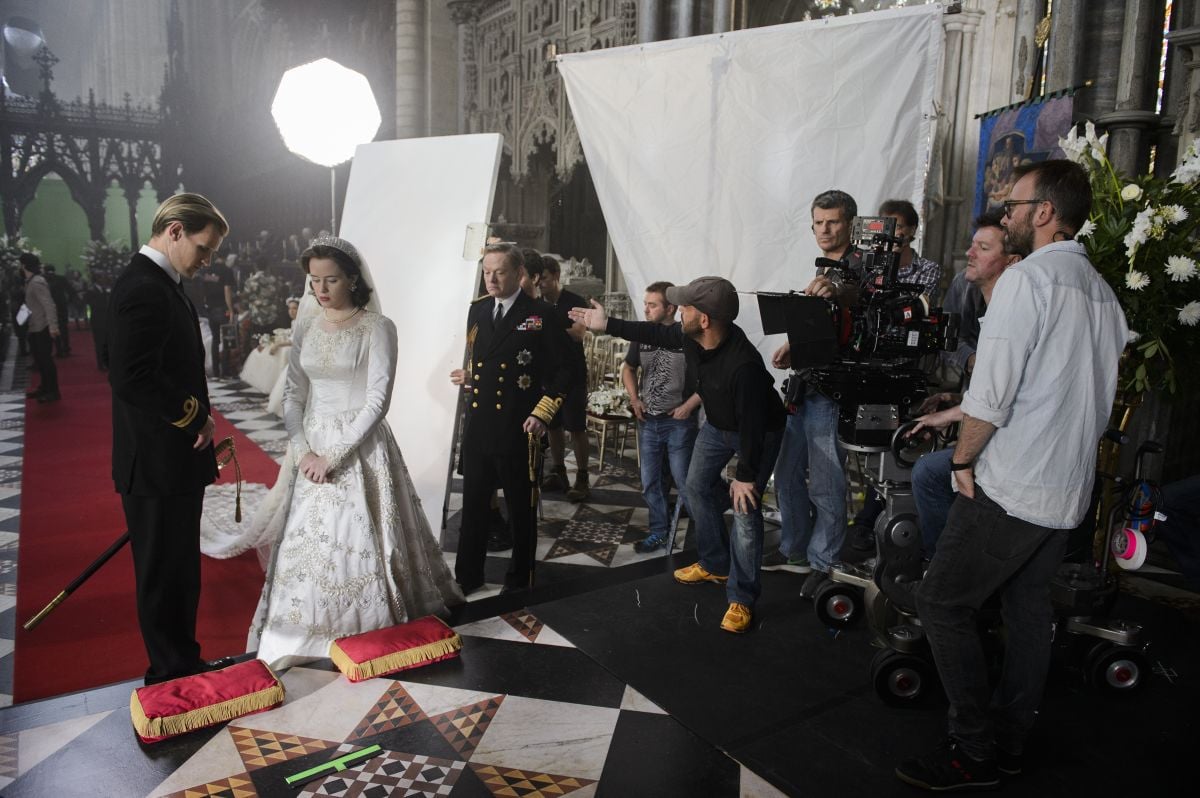
Crudo: I always feel that with period pieces there needs to be some sort of distancing device that will separate the period from the real life of the moment. Do you have any thoughts on that, or is there a particular approach you take on The Crown? It’s never so simple as just dropping in a filter; it has to be part of a more sophisticated overall plan.
Goldman: Absolutely. We never wanted to shoot a film that looked like something that was shot in the 1950s or ’60s. We never wanted to go that far on the period look, but we all agreed that ‘desaturation’ — muted colors on the sets’ and locations’ walls, curtains, furniture, picture cars, et cetera — was something we wanted in the mix. Then, after testing cameras and lenses, I came up with the idea of using vintage lenses. We had Cooke Panchros, rehoused by TLS U.K., plus [Tiffen] Glimmerglass filters, on the first two seasons. Those filters are not for diffusion, like Tiffen’s Pro-Mists, or fog filters; we use them just to add a little more glow in the highlights. And then there’s the haze. I always felt that adding some atmosphere helped — or still helps — to make the look less naturalistic, a tiny bit more romantic and period-like, but not too much. So the overall looks result from a combination of things we do on the camera side, along with the costumes, makeup and sets — it’s a huge team effort. For example, in Seasons 3 and 4 there’s a bit more color in the costumes. After using the Cooke Panchros on Seasons 1 and 2, I then jumped to Zeiss Super Speeds for Seasons 3 and 4; the Super Speeds are still vintage, but a bit more modern and a little sharper than the Panchros. I think Season 4 is a bit more observational, in a sense. We’re basically watching characters from afar.

Crudo: Do you have freedom to light as you see fit? Does anyone have any special requests, or do you generally come in to block things out with the director, who then leaves it to you to light the sets according to your taste?
Goldman: I feel very much free to do what I want. Of course, there’s a long prep phase, and the director and I discuss every single scene when we read the script. So I more or less know how to approach things, or how to start a scene even before the director arrives. That said, there’s an overall lighting strategy I’ve been using from the beginning, which is my ‘realistic’ approach: lights come from outside in. I rely very much on practicals, because [interiors] should feel real, but I also need to believe that the [exterior] light is coming from outside. So I’ve been using that strategy, both onstage and on location. The good thing about a big show like this is that we can afford very serious kinds of logistical challenges, like blocking roads in London just so I can position my lights outside a set. [Our sets] are usually on the second or third floor [of a location], so you need big machines. From my crew’s perspective, there’s always something to be done before the day starts. It’s often two cherry pickers outside supporting a SoftSun or HMIs. When the director, the 1st AD and the actors arrive on set for the very first rehearsal, I’m usually ready to shoot a wide shot or a master. There’s something already in place, so there are no lights on the core of the set itself — no stands or flags or anything else. Everything is coming from outside, so they can rehearse [more freely]. We usually start with a master of some sort, and then we move closer. At that point, I’ll bring something in close, like a Hudson Spider or a Source Four to add some sparkle in an actor’s eyes. The Hudson Spider is a super-soft LED source. [It folds out to an] umbrella/octagon shape, [like a] beautiful LED ‘spider.’ [Regarding the Source Four] I usually have an old-style tungsten one to bounce on a wall and create a little fill; I never use them on close-ups. An S60 SkyPanel through thick diffusion could [sometimes] replace the Hudson Spider, but rarely. Dedolights can [occasionally] be used as traditional eyelights.
“Working on The Crown has made me appreciate the influence you can have as a cinematographer by being part of a team for a long time.”
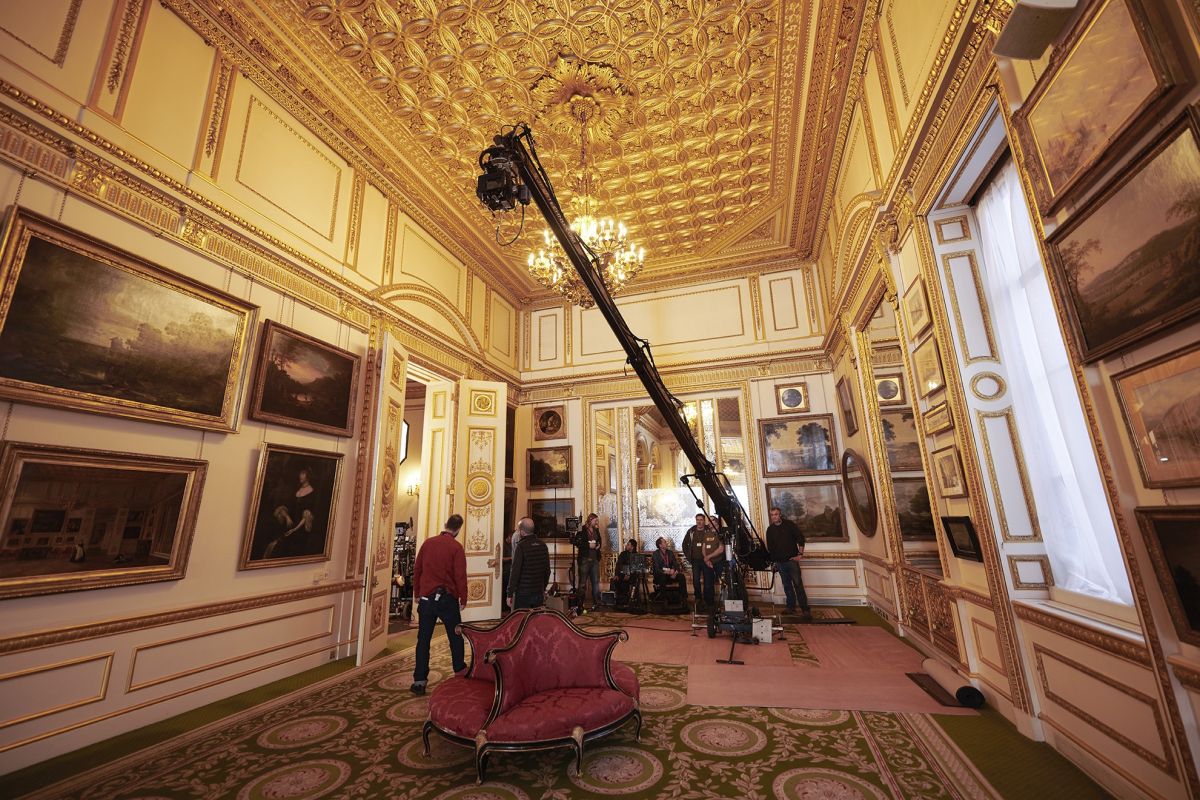
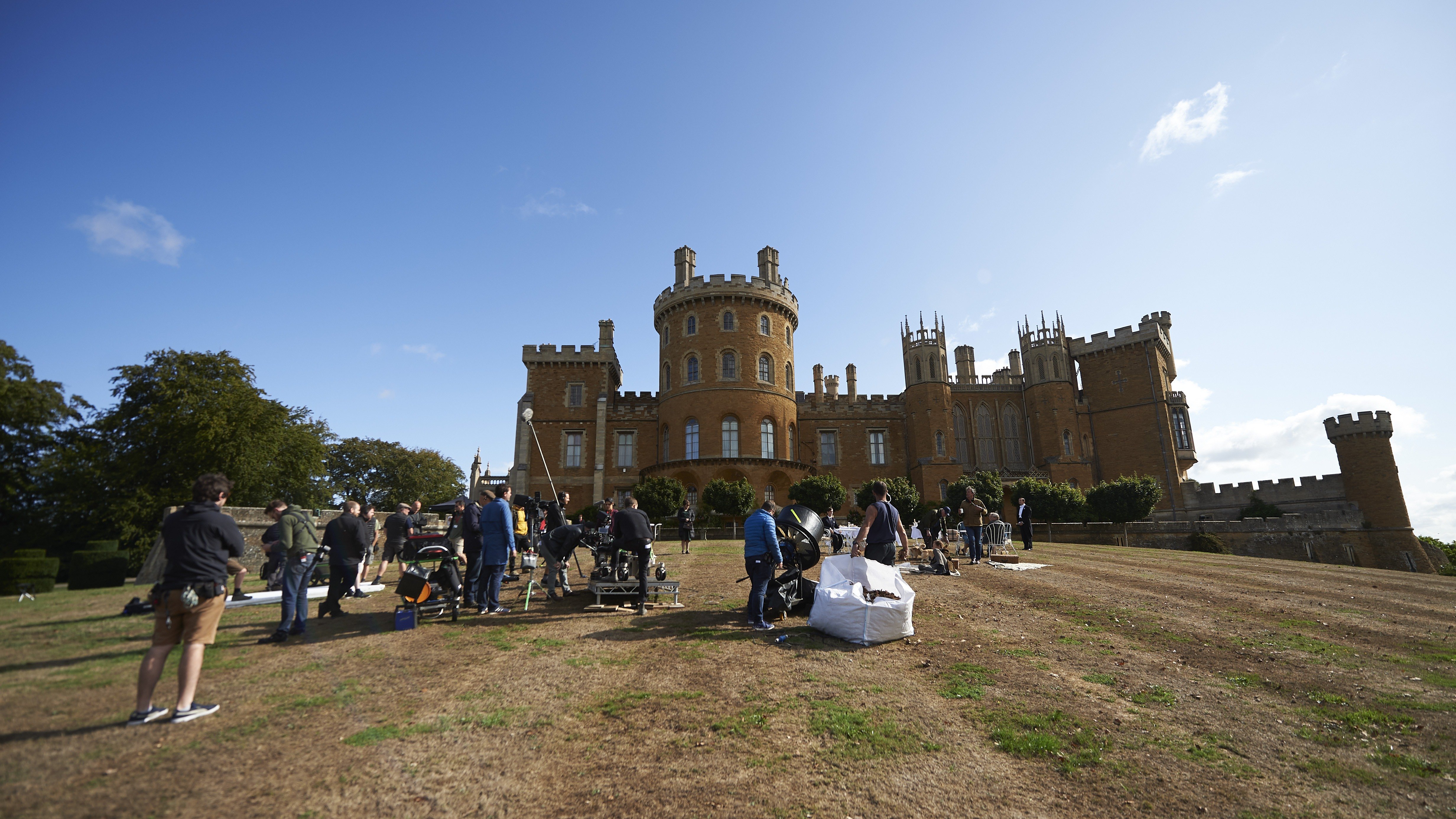
Crudo: Well, it seems so beautiful with a single-source mentality.
Goldman: I’m kind of stealing — borrowing — from Harris Savides [ASC], because I remember watching his work on Gus Van Sant’s films [Elephant, Gerry and Finding Forrester]. I mean, it’s beautiful. His work on those films is a bit more naturalistic than what I do on The Crown, but I remember Harris saying, ‘I light places. I light locations. That’s what I do.’ On Season 4, I think our directors know the strategy so well that when they get to a set they understand where the source will be — “Okay, windows, big windows.” So they bring the action closer to the source or away from the source. They can play with the strategy, instead of just being passive to it.
Crudo: Regardless of whether a scene takes place in the daytime or at night, everything has a beautiful, single-source feel — you get the most out of your sources. You provide a beautiful wrap, and the light just falls off so naturally.
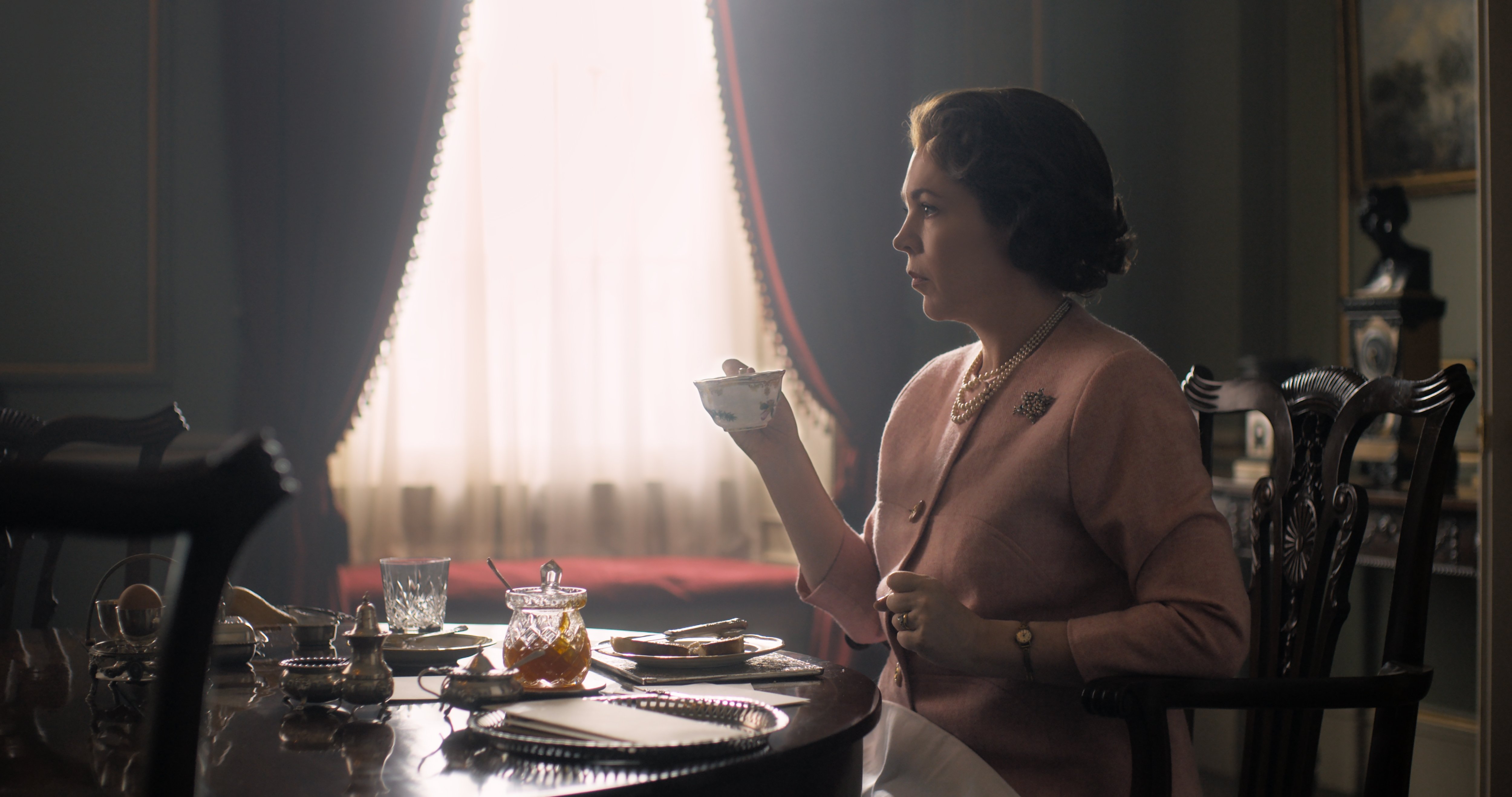
Goldman: The falloff is where I put my attention. Even when I have the ideal lighting situation — where I have a SoftSun outside, with nets on my windows, and it’s all working to look very soft and beautiful — the falloff is still the focus of my attention. So if I get to a mid-shot, I can just add another layer of net if I need to — not necessarily another source, but another layer of diffusion, just to make the falloff more clear, more dramatic, or quicker. Also, there’s never a backlight with no motivation. I’m never adding small Fresnels just to give my actresses’ hair a backlight. I rarely use bounce boards; instead, I bet on the falloff. I really appreciate when you use the term ‘falloff’ or ‘single source,’ because it’s a way of thinking and a way to light for all four seasons.
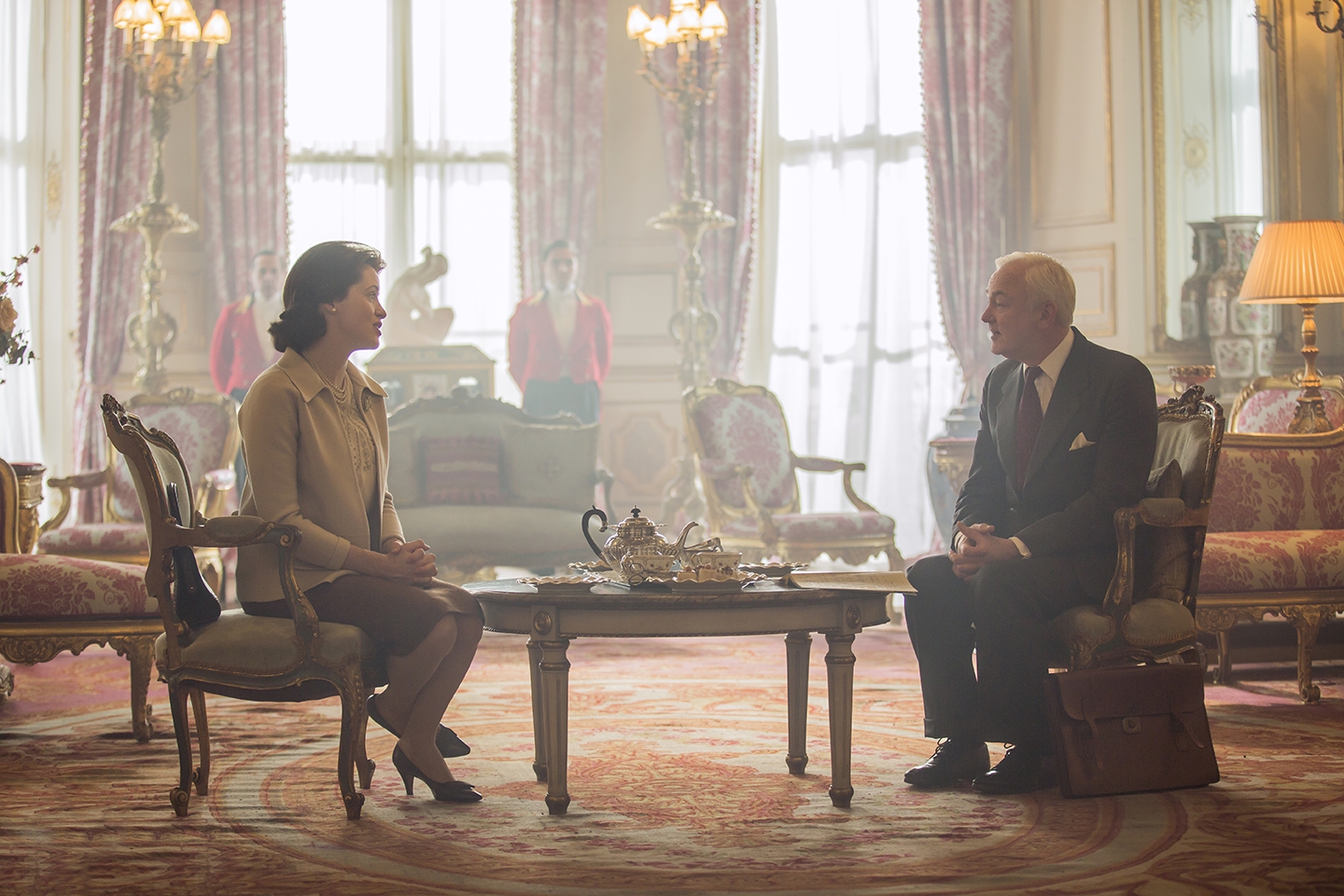
Crudo: I imagine some of the locations must be very delicate and you can’t do any rigging inside, so hence you light through the windows and you use practicals. Is that true?
Goldman: Technically, for insurance purposes, we cannot touch the walls on the majority of those locations. So that’s another reason why the lights come from outside.
Crudo: How many cameras do you usually shoot with?
Goldman: We usually block for one camera, but the B-camera team watches what we’re doing. I used to say that A camera is the one that tells the story, so that’s the director’s camera, while the B camera is my camera. On The Crown, the B camera adds to the coverage, but not in a traditional B-camera way; it’s either a punch-in — a way to cut into the scene — or a way to cut out of the scene. Or, if it’s a long dialogue scene, maybe the A camera will shoot over the shoulder while the B camera shoots the profile. If you save that profile shot until the end of the scene, it looks more like a dedicated shot than a B-camera shot. All shots should look like dedicated shots, and I think the editors on The Crown celebrate the fact that they have another angle, but they resist [using them until it’s appropriate]. I think if you go back and watch some of the long dialogues on The Crown, you’ll see that.
Crudo: You shot Seasons 1, 2 and 3 with the Sony F55. What did you rate the camera at?
Goldman: Eight hundred ISO. And I rarely played with that number, because if you jump to 1,250, it gets a little too noisy; for a show like The Crown, I didn’t feel like that kind of look was right. If you connect the lens selection to each season’s cast, there’s a consistency. The first two seasons with Claire Foy were shot with Cooke Panchros, and for Seasons 3 and 4 with Olivia Colman we used Zeiss Super Speeds. On Season 4, we changed the camera bodies as well, to the Sony Venice, and I’ve been rating the Venice for only two different ‘sensor environments’ — the main one is our ‘day mode,’ at 500 ISO, and the second is our ‘night mode,’ with a base rating of 2,500 ISO and shot at 1,000. The Venice is an unbelievable camera, Richard — basically, it sees more than your eye sees. Although I’m not a very technical person, after working an entire season on the Venice, my impression is that the 500 base environment prefers a little underexposure. So I’ve been exposing skin tones under 50 percent. Then when I jump to the night mode, by setting the ISO at 1,000, I’m basically overexposing by a stop and a half. By doing that, you absolutely kill the noise.
Crudo: What stop do you generally shoot at for interiors and exteriors? What do you generally aim for?
Goldman: My dream is to shoot everything at a 2.8, maybe 2.8 and a half [for interiors] and 4.5 for exteriors. We’re heavily ND’d when we’re outside.
Crudo: How did Netflix support the show’s use of HDR? That stuff looks beautiful.
Goldman: We shot the first two seasons in SDR and then Seasons 3 and 4 in HDR. Between Seasons 3 and 4, Netflix invited me — hired me — to re-grade all episodes of Seasons 1 and 2 to HDR. So if you have an HDR monitor at home, all of the show’s episodes are now available in HDR in your Netflix menu.
Crudo: Since you knew in advance that Seasons 3 and 4 would be shot in HDR, how has that changed your approach? Have you had to adjust any of your working methods on set, or anything you’re doing in post?
Goldman: When I shot Season 3, I was not yet aware of [the full implications of shooting] HDR, but then we graded the episodes in HDR, so I actually began to [better] understand the range when I was doing post than when I was shooting. I learned a lot, and then we went back to re-grade Seasons 1 and 2, so I had a proper HDR course with my amazing colorist, Asa Shoul. As a result, when I finally started shooting with the Venice, I was much more aware of what HDR can do — it actually gives you much more [range] to play with. The attention I pay to highlights and windows is very important on this show, so I had to pay a bit more attention; eventually, just to give the windows a little more information [in the overall exposure], I started to underexpose everything else. I know that if I’m shooting at 500 [ISO], underexposing my material is fine because I can always give that area a power window in post and lift it up a little; the opposite is much more difficult. I prefer protecting my highlights a bit.
Crudo: What codec are you shooting? Are you shooting raw?
Goldman: We shoot raw and X-OCN [Sony’s eXtended tonal range Original Camera Negative format].
Crudo: Do you do any live grading yourself, while you’re shooting?
Goldman: No, I don’t like having that rig on my set. I’ve been working for a few years now with my DIT, John Paxton, so he understands my methodology. He’s a quiet man, so I think he actually enjoys being in the van by himself, grading footage before sending it off to editorial. We do have LUTs provided by Asa Shoul, John Paxton and me, so all of the show’s cinematographers and directors are welcome to actually have LUTs on their monitors; John’s not pre-grading on set, because he’s not right there with us, but he’s grading right after we finish. So after John picks up every recorded card from the set, he goes back to his van, pre-grades everything, backs it up, and then sends it to editorial. It’s more or less the same method, it’s just not happening by my side. I don’t understand how you can have [live grading].
Crudo: You shoot in 2:1 aspect ratio?
Goldman: I think we are cropping the sensor to shoot 4K on spherical lenses, but we shoot 2:1. It’s just a little bit of a crop — a bit on the top and bottom, but not too much.
Crudo: What post house do you work with?
Goldman: Seasons 1, 2 and 3 were mainly done at Molinare, but for Season 4 we’ll be at Warner Bros. De Lane Lea in London. Asa, our colorist, moved from Molinare to Warner Brothers, and I insisted that we move with him.
Crudo: What effect do you think the quality of the cinematography has on an audience, in the way that it supports the story and otherwise?
Goldman: As I mentioned earlier, I don’t think good cinematography can save a bad script. I think people only perceive what I do if they engage with the show’s themes and performances — if they engage with the story that’s been told. I think my job is to enhance whatever I can. My challenge is to be as good as the material, or to exceed myself and deliver something that is as high-end as what I’m reading. I don’t think the cinematography can truly be appreciated unless you also appreciate what you’re watching in terms of the overall quality. Filmmaking is a collective [endeavor]. I don’t think I’m even supposed to have a style as a cinematographer — I should adapt and work together with a director, a production designer and a writer, in order to build something strong. I don’t have a romantic idea about what I do. I absolutely love what I do, but by the time I arrive there’s already a script. Often, a location scout has already been done, and a designer with ideas has already been hired. From a career perspective, what’s important to me now is trying to get the longest prep period possible, so I can be involved on whatever show I’m doing for as long as I can — maybe as long as the designer, so we can work together on the [practical] design of the sets. Working on The Crown has made me appreciate the influence you can have as a cinematographer by being part of a team for a long time. The kind of management power I have on the show is rare on feature films. Everything goes through me at some point.
TECH SPECS
2:1 Digital Capture
Sony PMW-F55, Sony Venice
Cooke Speed Panchro, Zeiss Super Speed
Edited by David E. Williams and Stephen Pizzello
You’ll learn much more about Goldman’s camerawork in the series from this Clubhouse Conversations interview conducted by Larry Sher, ASC:
